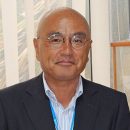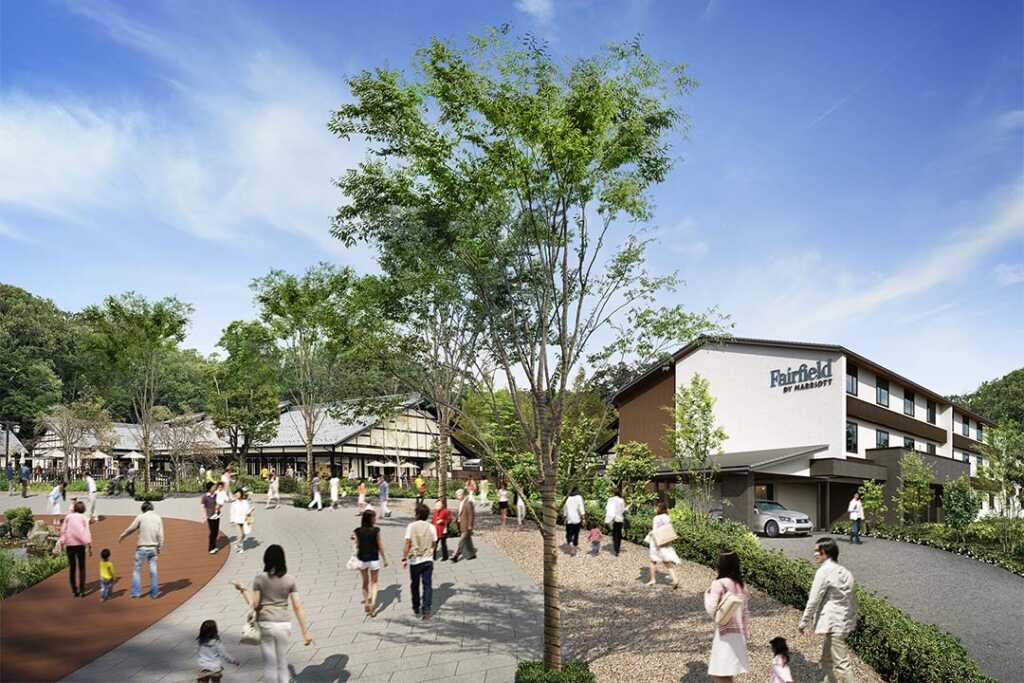Before the day’s panels began at PHILHOST 2025: Pursuing Sustainability, held at the Ascott Bonifacio Global City in Manila, I found myself sharing coffee and a lively conversation in Spanish with none other than Isabelle Miaja.
Miaja had flown in as a keynote speaker for the full-day forum, which brought together leaders in hospitality and design to chart a more sustainable future for tourism in the Philippines. Her remarks on understanding people and place resonated deeply. But it was our early morning chat that opened the door to a deeper discovery of a globally acclaimed design practice that weaves culture, creativity, and character into every space it shapes.
Founded in 1995 and based in Singapore and Paris, Miaja Design Group is a family-run design studio led by Isabelle Miaja, whose career has spanned continents and project types—from Beverly Hills homes to overwater villas in the Maldives. The firm is now a global reference for luxury hospitality and residential design.
A Practice Rooted in Art, Family, and Innovation
With projects such as the W Maldives, Sofitel So Singapore, Lotte Hotel Busan, JW Marriott Resort & Spa Maldives, Hyatt Regency Mactan in the Philippines, and Club Med Sahoro in Hokkaido, Japan, Miaja Design Group consistently crafts spaces that are more than just environments, but stories brought to life. The firm’s signature lies in its ability to channel the cultural identity of each locale and translate it into immersive, meaningful experiences. Whether through bespoke art collections, biomimicry-inspired forms, or elements drawn from indigenous crafts and traditions, as seen in their Hokkaido project, which combines a nuanced modernity with traditional Japanese aesthetics while preserving the beauty and splendor of Ainu culture – Miaja’s work always transcends surface aesthetics.
Art, in particular, plays a central role in Miaja’s creative vision. Through Miaja Gallery and Miaja Art Collections, she collaborates with artists to co-create pieces that reflect and elevate the spirit of each location. Raised in a creative household, with a sculptor grandfather and a granduncle who was a renowned Spanish poet, it’s no surprise that her designs echo this deep reverence for artistry, storytelling, and soul.
Family continues to shape the business today. Her son, Julian Miaja, now Director of Operations and Finance, has been instrumental in scaling the firm’s international operations. Her daughter, Severine, a senior designer, brings a refined artistic sensibility to the studio’s furniture, fixtures, and equipment selections and overall project development. Julian also graciously helped facilitate this feature, highlighting the tight-knit collaboration that drives the firm forward.
Designing with Soul
A Conversation with Isabelle Miaja
In this special feature, Isabelle Miaja shares the inspirations behind her work, the philosophies that guide her, and how she views design not merely as a profession, but as a powerful means to create a more meaningful and beautiful world.
Growing up with a poet granduncle and a father who was a renowned jeweler, how did your creative upbringing in Paris shape your design sensibility and aesthetic today?
I was indeed fortunate to grow up with such artistic and renowned family members, as they instilled in me the desire and will to be the best in my own field. They gave me the aspiration to follow in their footsteps, both in creativity and unrelenting drive to achieve the best in my work. Two minds that applied themselves in two separate artistic expressions and excelled through talent, but mostly hard work, were an amazing inspiration and guides.
Being born in Paris, living in both France and Spain, and having the chance to be raised in such a creative home, surrounded by beauty both inside and outside, has definitely impacted many of my senses: the sense of proportions from the architecture, its buildings and monuments; the sense of colors and harmony from interiors and nature. Learning to appreciate the past as well as being in a city where design is an inherent part of the constant evolution of styles and influences has given me the foundation needed to develop my own style and skills.
I learned by osmosis, but also by being nurtured. My mum took us to many art exhibitions and museums, explaining the differences between a Monet and a Picasso. To concerts and theater, encouraging reading all sorts of books, and listening to the ongoing conversations at the dinner table about many different subjects, sometimes heated discussions, which also taught me the art of argumentation and diplomacy.
Yeats said, “Education is not the filling of a pail, but the lighting of a fire,” and I believe it is what was ignited and still burns within me.
You’ve said, “The essence of style is to live the art of being unique.” How does this philosophy guide your work across continents and cultures?
“The essence of style is to live the art of being unique.” To me, design and art are about transformation. Metamorphosis. Change. Transformation is about seeing differently, through and beyond, as well as about creating mindfully. It is about process and infinite possibilities, because transformation is, per se, unpredictable. To me, style and design are like art: an infinite world of possibilities and combinations, transforming the immediate reality into something else, subtle and boundless. By integrating different cultures, like a kaleidoscope, the imagination expands and keeps on reinventing its surroundings.
From a Bond-inspired resort in the Maldives to the cultural layers of Lotte Hotel Busan, how do you approach designing in unfamiliar settings?
Each project is a discovery and learning process, carefully unfolded to ensure we capture the essence of a place, its culture, its people, and unfold a story that is authentic and mindful.
Each project is a discovery and learning process, carefully unfolded to ensure we capture the essence of a place, its culture, its people, and unfold a story that is authentic and mindful.
Isabelle Miaja, Managing & Creative Director of Miaja Design Group
Art is central to your projects, often featuring bespoke collaborations. Why is this important to you, and can you share a few artists who’ve inspired you?
Art is indeed a central part of my creativity. Artists incorporate their cultural background into their work, either explicitly or implicitly, to express identity, explore heritage, or reflect on contemporary society, through their medium to help us be authentic in our designs.
Wellness and sustainability are becoming pillars of luxury. How have you woven these into your recent projects, and why do they matter now more than ever?
We’ve lived through a difficult period in recent years. COVID has made us realize how mental and physical health are vital to humanity. Wellness has taken another dimension in our existence, we now prioritize well-being more than ever before.
We are also very aware of the impact our lifestyle has on our surroundings and realizing how great a toll it has taken on our future and the future of our children. Sustainability is no longer a “fad”; we are directly suffering the consequences of the world’s poor resource management, and this at all levels. If it is starting at the luxury level, it’s because there are more available funds to put processes in place that will help in the long run, such as zero-waste recycling.
Unfortunately, being sustainable is much more expensive than going the old way. In our field of design, especially in hospitality, we see a real movement being implemented. Manufacturers are putting a lot of effort into constantly researching better materials and renewable products, and we definitely see a conscious shift in decision-making at all levels toward a better future for the next generations. We are part of the solution – design is not just about beauty, but beauty with a soul. Our role is crucial in offering solutions, presenting the pros and cons, expanding the knowledge of our clients, and supporting the growing demand of users who want a better world and make their vacation choices based on those values.
The new W Maldives reflects a shift from opulence to meaningful luxury. What inspired this evolution in your design vision?
W Maldives is indeed a true reflection of such aspirations, a combination of luxury and mindfulness. A resort is even more fragile, as we directly impact nature and its ecosystem, and we have an even greater responsibility toward its protection. The evolution is not just ours, but the result of a true alliance of minds: the operator Marriott, the client who is ultimately the financial decision-maker, and us as designers who propose viable solutions that uphold the design intent and integrity in all its aspects.
You’ve worked on iconic projects around the world. Is there one that challenged or moved you in an unexpected way, and how did it shape you?
Each of our projects has helped shape and stretch us. We are challenged in many ways during the design and building process, having to navigate many rules, laws, and expectations. It’s never a quiet journey, and because each project is unique, the learning curve is never complete.
From resorts floating in the middle of the ocean, or in the middle of a desert, to a hospital in the heart of the city, to high-end residences and city hotels in different countries with diverse cultures, we navigate these as we navigate life: one day at a time, giving it all we have and hoping that our best has been reached to everyone’s satisfaction, and especially ours.
Ultimately, the desire to create something unique and iconic is always at the center of our design creativity.
Discover more at www.miajadesigngroup.com




















